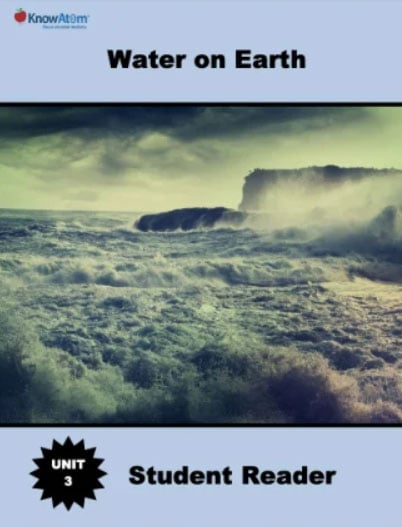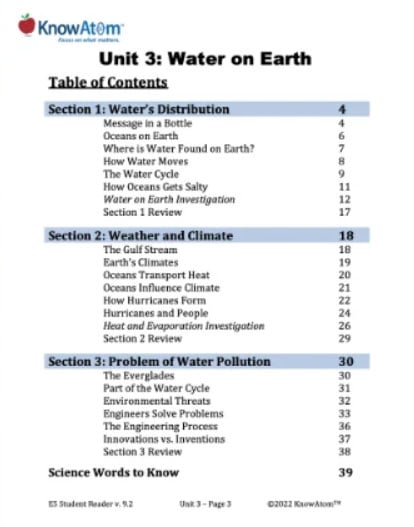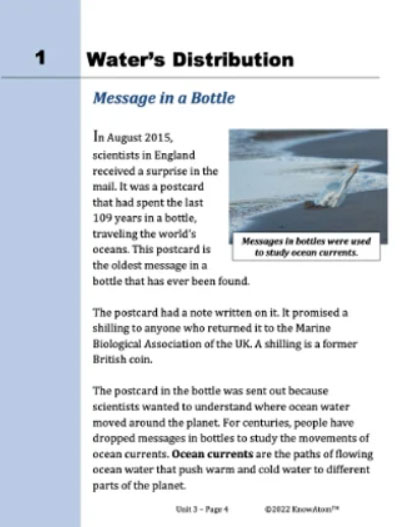Conservation : the weighing of human needs against the needs of the environment to create a sustainable way for humans to live off of natural resources
Environmental Threat : anything that can cause harm to the environment (e.g., pollution, deforestation, invasive species, overhunting, and climate change)
Evaporation : the process of liquid water changing into water vapor, its gas state
Ocean Currents : paths of flowing ocean water that push warm and cold water to different parts of the planet
Precipitation : the process of water falling back to Earth in the form of rain, snow, sleet, or hail
Proportion : the relationship between things, as to size, quantity, or number
Runoff : occurs when water, along with the substances carried in it, flow from the surface of an area of land, a building or structure
Water Cycle : the circulation of water through the hydrosphere from Earth’s surface to the atmosphere and back
Weather : the conditions of the atmosphere (temperature, humidity, wind speed, air pressure, and precipitation) in a particular place at a particular time








